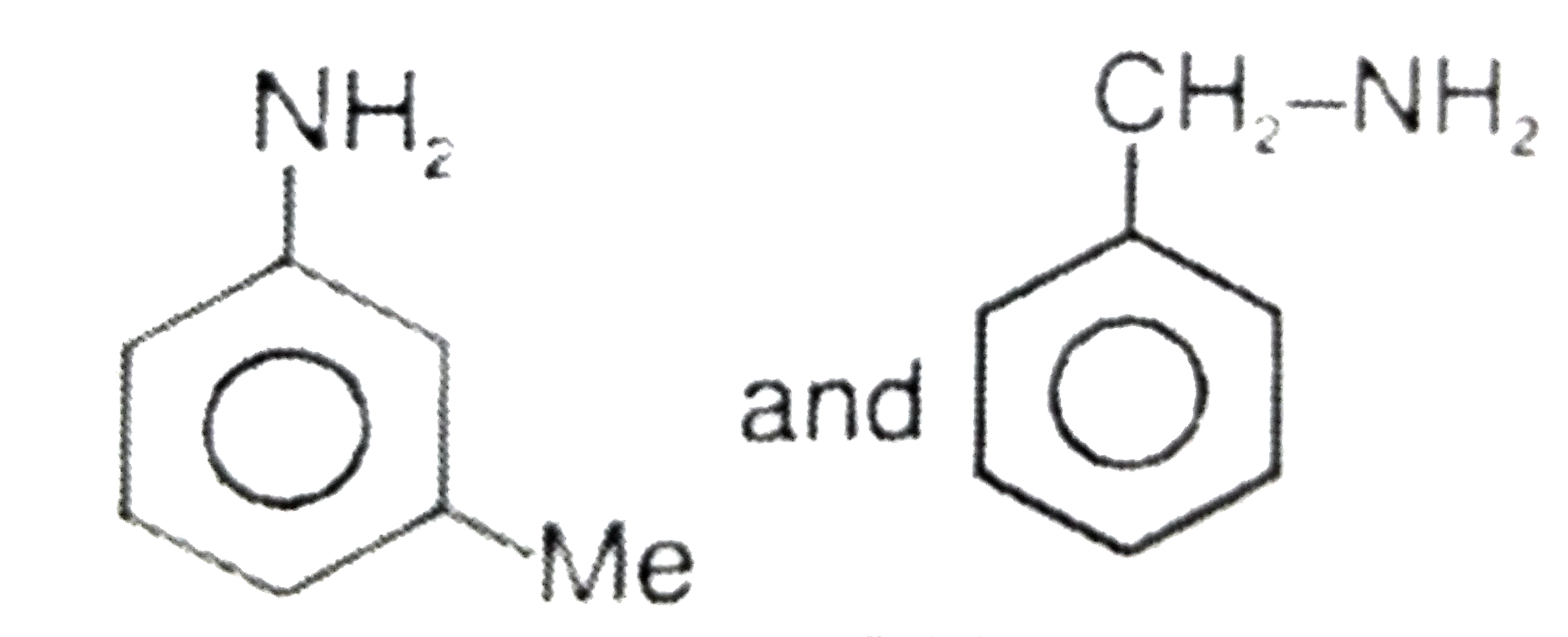Acetaldehyde and acetylene can be distinguished by :
Tollen's reagent
Fehling solution
Lucas reagent
Iodoform test
The correct Answer is:A,B,D
To distinguish between acetaldehyde and acetylene, we can utilize several reagents. Here’s a step-by-step breakdown of the methods:
Step 1: Understand the Compounds
- Acetaldehyde (CH₃CHO): It is an aliphatic aldehyde.
- Acetylene (C₂H₂): It is a terminal alkyne.
Step 2: Tollen's Reagent Test
- Tollen's Reagent: This reagent is also known as the silver mirror test. It consists of ammoniacal silver nitrate (Ag(NH₃)₂⁺).
- Reaction: Acetaldehyde will reduce Tollen's reagent, resulting in the formation of a silver mirror on the test tube's inner surface. Acetylene does not produce a silver mirror.
- Conclusion: Acetaldehyde gives a positive Tollen's test, while acetylene does not.
Step 3: Fehling's Solution Test
- Fehling's Solution: This solution contains copper(II) sulfate and sodium potassium tartrate.
- Reaction: Acetaldehyde will react with Fehling's solution and reduce it, forming a red precipitate of copper(I) oxide. Acetylene does not react with Fehling's solution.
- Conclusion: Acetaldehyde gives a positive Fehling's test, while acetylene does not.
Step 4: Lucas Reagent Test
- Lucas Reagent: This reagent is used to differentiate between primary, secondary, and tertiary alcohols, but it is not applicable for distinguishing between aldehydes and alkynes.
- Conclusion: This reagent will not help in distinguishing acetaldehyde from acetylene.
Step 5: Iodoform Test
- Iodoform Test: This test is used to identify methyl ketones and some aldehydes.
- Reaction: Acetaldehyde (which has a methyl group adjacent to the carbonyl) will give a positive iodoform test, producing a yellow precipitate of iodoform (CHI₃). Acetylene does not give this test.
- Conclusion: Acetaldehyde gives a positive iodoform test, while acetylene does not.
Final Conclusion:
- Distinguishing Tests: Acetaldehyde can be distinguished from acetylene using Tollen's reagent, Fehling's solution, and the iodoform test. Acetylene does not react positively in these tests.
- Acetaldehyde (CH₃CHO): It is an aliphatic aldehyde.
- Acetylene (C₂H₂): It is a terminal alkyne.
- Tollen's Reagent: This reagent is also known as the silver mirror test. It consists of ammoniacal silver nitrate (Ag(NH₃)₂⁺).
- Reaction: Acetaldehyde will reduce Tollen's reagent, resulting in the formation of a silver mirror on the test tube's inner surface. Acetylene does not produce a silver mirror.
- Conclusion: Acetaldehyde gives a positive Tollen's test, while acetylene does not.
- Fehling's Solution: This solution contains copper(II) sulfate and sodium potassium tartrate.
- Reaction: Acetaldehyde will react with Fehling's solution and reduce it, forming a red precipitate of copper(I) oxide. Acetylene does not react with Fehling's solution.
- Conclusion: Acetaldehyde gives a positive Fehling's test, while acetylene does not.
- Lucas Reagent: This reagent is used to differentiate between primary, secondary, and tertiary alcohols, but it is not applicable for distinguishing between aldehydes and alkynes.
- Conclusion: This reagent will not help in distinguishing acetaldehyde from acetylene.
- Iodoform Test: This test is used to identify methyl ketones and some aldehydes.
- Reaction: Acetaldehyde (which has a methyl group adjacent to the carbonyl) will give a positive iodoform test, producing a yellow precipitate of iodoform (CHI₃). Acetylene does not give this test.
- Conclusion: Acetaldehyde gives a positive iodoform test, while acetylene does not.
- Distinguishing Tests: Acetaldehyde can be distinguished from acetylene using Tollen's reagent, Fehling's solution, and the iodoform test. Acetylene does not react positively in these tests.
Topper's Solved these Questions
Similar Questions
 can be distinguish by View Solution
can be distinguish by View SolutionAcetaldehyde and Propyne can be distinguish by :
(i) Tollen's reagent " " (ii) l2/NaOH " " (iii) Lucas reagent " " (iv) neutral FeCl3View SolutionPropyne and propene can be distinguished by :
View SolutionWhat is Tollens' reagent ? How can acetaldehyde and acetone be distinguished with its help?
View SolutionBut-1-yne and But-2-yne can be distinguished by :
View SolutionAcetaldehyde and benzaldehyde can not be distinguished by
View SolutionMethanol and ethanol can be distinguished by
View SolutionAcetamide any and ethy1 amine can distinguished by reacting with .
View SolutionAcetaldehyde to acetoxime
View SolutionGlucose and fructose can be distinguished by
View Solution

